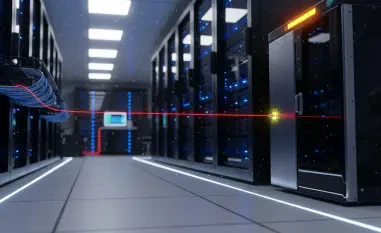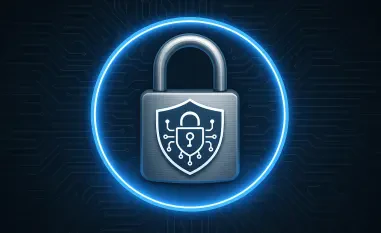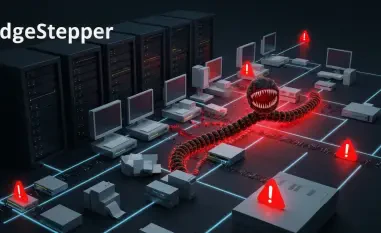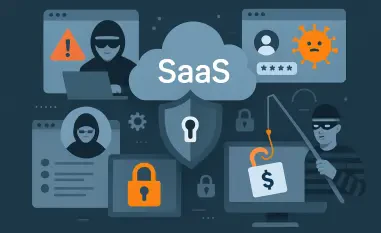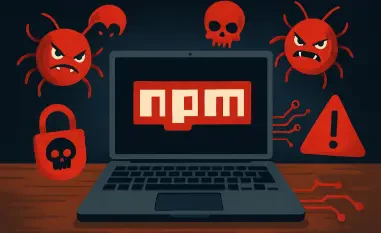Malik Haidar is a recognized expert in cybersecurity with a profound understanding of how businesses can protect themselves from the ever-evolving threats posed by hackers. His focus combines the technical side of cybersecurity with a strategic business approach, making him uniquely qualified to discuss the sophisticated techniques attackers use today, including the innovative ClickFix.
Can you explain what ClickFix is and how it works in the context of cyber attacks?
ClickFix is a social engineering technique designed to manipulate users into executing malicious commands under the guise of solving a problem. Attackers typically use this method to trick unsuspecting users, often using cleverly crafted fake pop-ups, to add a layer of legitimacy to their requests. The approach leverages users’ instincts to troubleshoot and resolve issues to facilitate the delivery of malicious payloads.
How do attackers leverage ClickFix to trick users into executing malicious commands?
Attackers exploit ClickFix by presenting the user with a seemingly urgent issue that demands immediate attention. This might involve fake pop-ups claiming to fix vulnerabilities or errors, pushing users to click through prompts that ultimately lead them to unleash malware into their systems. These pop-ups are designed to appear authentic, often imitating legitimate system notifications or third-party alerts to lower the user’s guard.
What role do fake pop-ups play in the ClickFix technique?
Fake pop-ups are pivotal in the ClickFix strategy, acting as the catalyst in the deception process. By mimicking real alert windows or system messages, these pop-ups foster an environment where users feel compelled to act quickly. This urgency is precisely what attackers rely on, as it increases the likelihood of users following the steps that will inadvertently execute malicious software.
According to ReliaQuest, how has ClickFix contributed to the increase in drive-by compromises?
ReliaQuest noted a significant uptick in drive-by compromises, attributing a 10% increase directly to ClickFix. The method’s ability to masquerade as legitimate processes allows attackers to swiftly gain access without raising immediate suspicion, facilitating a surge in such compromises by exploiting innate user trust and the desire to resolve supposed security concerns.
How does the use of MSHTA by threat actors help them bypass traditional security controls?
MSHTA, being a native Windows binary for executing HTML application files, is inherently trusted by system defenses, which makes it an ideal vector for threat actors. By using MSHTA, attackers can circumvent common security controls that typically scan for and block suspicious executable files, thus slipping under the radar while deploying harmful commands through seemingly legitimate processes.
Can you elaborate on the connection between ClickFix and the increased use of MSHTA in cyber attacks?
The synergy between ClickFix and MSHTA involves leveraging ClickFix’s social engineering aspects to entice users into executing MSHTA commands unwittingly. Since MSHTA is a legitimate tool, it complements ClickFix perfectly by evading traditional detection mechanisms, thus making it an attractive choice for attackers aiming for stealthier infiltration techniques.
How did the early adoption of ClickFix techniques impact the prevalence of MSHTA abuse?
ClickFix’s early adoption transformed MSHTA from a lesser-used tool into a primary method for evasion, ranking it from the 16th to the second among defense evasion tactics. This swift transition underscores the effectiveness of combining social engineering with trusted system tools, resulting in widespread adoption and increased abuse by cybercriminals.
What is ClearFake, and how has it contributed to the rise of ClickFix methods?
ClearFake is a JavaScript framework that further popularized ClickFix methods by employing deceptive CAPTCHAs. These CAPTCHAs trick users into executing harmful MSHTA commands. By demonstrating how capable ClickFix can be in bypassing security measures, ClearFake accelerated its adoption and contributed significantly to the rise in MSHTA reliance.
What proportion of defense evasion attacks now involve MSHTA?
Currently, MSHTA is involved in about a third of defense evasion attacks. This statistic highlights its growing importance in attackers’ arsenals, largely due to its ability to bypass conventional security solutions when used alongside techniques like ClickFix.
Besides MSHTA, what other tools or malware are commonly being deployed with the help of ClickFix?
Alongside MSHTA, ClickFix is often used to deploy tools like Lumma Stealer and SectopRAT. Both these threats can exfiltrate credentials and create backdoors for deeper system infiltration. Their compatibility with ClickFix’s methods further enhances their distribution in malvertising strategies.
How are Lumma Stealer and SectopRAT being distributed using ClickFix?
Attackers utilize ClickFix in tandem with malvertising strategies, such as fake Google ads, to distribute these tools. By misleading users into downloading what appears to be legitimate software, attackers can embed harmful software like Lumma Stealer and SectopRAT into seemingly benign installer packages.
Can you discuss the use of fake Google ads in ClickFix malvertising campaigns?
Fake Google ads are ingeniously integrated into ClickFix campaigns as part of a broader effort to deceive users. These ads mimic legitimate promotions, leading users to download fake installers of trusted applications such as Google Chrome, which harbor hidden malware ready for execution on their systems.
What makes SectopRAT a significant threat in the current cyber landscape?
SectopRAT is particularly menacing due to its capability to establish sophisticated backdoors within infected systems. This not only allows attackers continued access but also enables them to conduct further exploitation, making it a versatile tool for cybercriminals looking to escalate their intrusions.
Why is ClickFix considered a “game-changing initial access technique”?
ClickFix is game-changing because it merges the potency of trusted tools with cunning social engineering. This hybrid allows attackers to navigate past typical defenses seamlessly, offering a direct pathway for delivering harmful payloads without immediate detection, which is invaluable for initial system access.
How might ransomware actors benefit from integrating ClickFix into their operations?
Ransomware operators stand to gain significantly from ClickFix due to its ability to deploy malware indirectly through well-trusted system tools like MSHTA. This stealthiness increases the probability of successful infection, thereby amplifying the impact and scope of ransomware campaigns.
What are the advantages of using trusted tools like MSHTA in ransomware campaigns?
The inherent trust placed in tools like MSHTA means they are less likely to be flagged by security systems during routine checks. Ransomware campaigns can thus use these tools to conceal their activities under a veil of legitimacy, reducing their chances of premature detection and enhancing their effectiveness.
How effective has ClickFix been at bypassing traditional defenses like email filters and endpoint protection?
ClickFix proves remarkably effective at bypassing traditional defenses by blurring the lines between legitimate and malicious processes. By driving users to internalize actions through social engineering, it sidesteps email filters and endpoint protection that are tuned to block direct threats, making detection challenging.
What predictions does ReliaQuest make about the future use of ClickFix by RaaS affiliates?
ReliaQuest forecasts that ClickFix’s success will lead to widespread adoption among Ransomware as a Service (RaaS) affiliates, estimating up to 30% may incorporate these techniques imminently. This offers a streamlined method for scaling campaigns and improving operational efficiencies.
What recommendations does ReliaQuest provide to organizations to mitigate the risks of ClickFix campaigns?
To mitigate such risks, ReliaQuest advises organizations to restrict access to the Windows Run prompt for non-admin users. This simple measure limits attackers’ ability to exploit these functions during ClickFix campaigns, thereby protecting users from inadvertently executing harmful commands.
Why is it important for organizations to restrict access to the Windows Run prompt for non-admin users?
Restricting access is crucial because it curtails attackers’ ability to execute harmful commands within user systems. By limiting these permissions to admin users only, organizations reduce the potential for unauthorized exploitation that ClickFix campaigns depend upon for successful infiltration.

